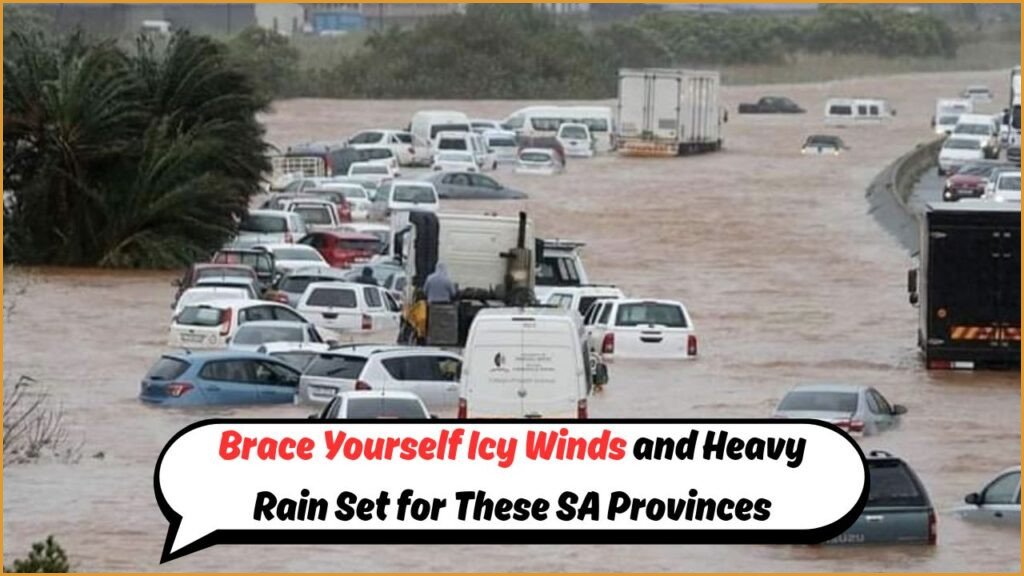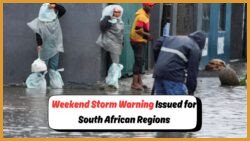Cold Front and Rain in South Africa: As the weekend approaches, residents of South Africa should prepare for a significant weather change. Meteorological forecasts predict a cold front accompanied by substantial rainfall, set to hit various regions of the country. This sudden shift in weather patterns is expected to bring a noticeable drop in temperatures and increased precipitation, impacting daily activities and travel plans. Areas most likely to be affected include the Western Cape, Eastern Cape, and parts of the Free State. The South African Weather Service has issued alerts, urging citizens to stay informed and take necessary precautions to ensure safety during this period of adverse weather conditions.

Impact of the Cold Front on South African Regions
The impending cold front is anticipated to have a significant impact on multiple regions across South Africa. In the Western Cape, residents can expect cold, wet conditions, with heavy rainfall potentially leading to localized flooding in low-lying areas. The Eastern Cape is also forecasted to experience similar weather, with strong winds exacerbating the chill. The Free State, although not as heavily affected, will see lower temperatures and scattered showers. Farmers in these regions are advised to secure their crops and livestock against the adverse weather, while urban dwellers should prepare for potential disruptions in transportation and power supplies. The authorities are working closely with local communities to minimize the impact, providing resources and assistance where necessary.
 Urgent Alert: SASSA Beneficiaries Required to Verify IDs Before August 20, Confirms Home Affairs
Urgent Alert: SASSA Beneficiaries Required to Verify IDs Before August 20, Confirms Home Affairs
Weather Warnings and Safety Precautions for the Weekend
Given the severity of the incoming cold front, the South African Weather Service has issued several weather warnings to help residents prepare and stay safe. People living in affected areas are advised to monitor weather updates regularly. It is crucial to have an emergency kit ready, including non-perishable food, water, and essential medications. Motorists should exercise caution on the roads, as the combination of rain and wind can lead to hazardous driving conditions. In case of severe weather, residents should stay indoors and avoid unnecessary travel. Community leaders are encouraged to assist vulnerable populations, such as the elderly and those with disabilities, ensuring they have access to necessary supplies and support during this period.
Economic and Environmental Implications of the Weather Shift
The cold front and subsequent rainfall are expected to have both economic and environmental implications for South Africa. On the economic front, sectors such as agriculture and tourism may experience disruptions, with adverse weather potentially damaging crops and affecting tourist activities. In the environmental context, the increased rainfall could benefit drought-stricken areas by replenishing water sources and supporting ecosystems. However, the risk of flooding remains a concern, as it can lead to soil erosion and damage to infrastructure. Authorities and environmental organizations are closely monitoring the situation to mitigate negative impacts while maximizing potential benefits. The public is encouraged to remain vigilant and cooperative to ensure community safety and resilience during this period.
Community Preparedness and Response to Cold Front Challenges
Community preparedness is crucial in managing the challenges posed by the cold front and rain. Local governments and organizations are working together to enhance community resilience by providing resources and guidance. Efforts include distributing weather-proofing materials, organizing community workshops on emergency response, and setting up shelters for those in need. Public awareness campaigns are also underway to educate citizens on the importance of preparedness and safety measures. By fostering a proactive approach and encouraging collaboration, communities can effectively navigate the challenges of the cold front and emerge stronger. Residents are urged to stay informed, support one another, and heed advice from authorities to ensure their safety and well-being throughout the adverse weather conditions.






